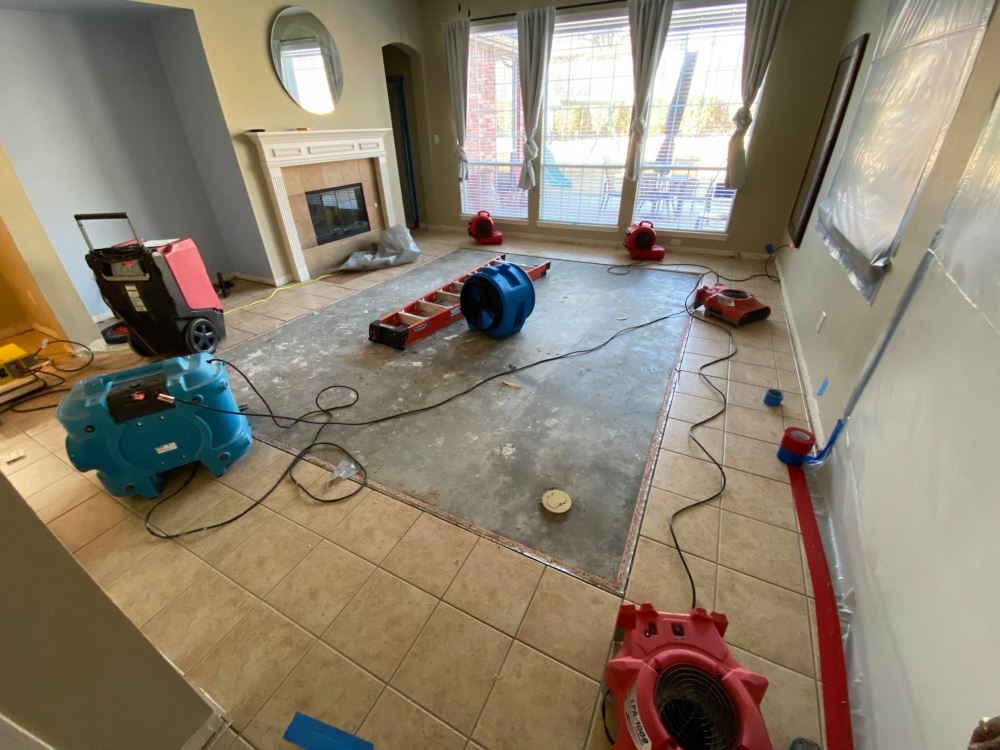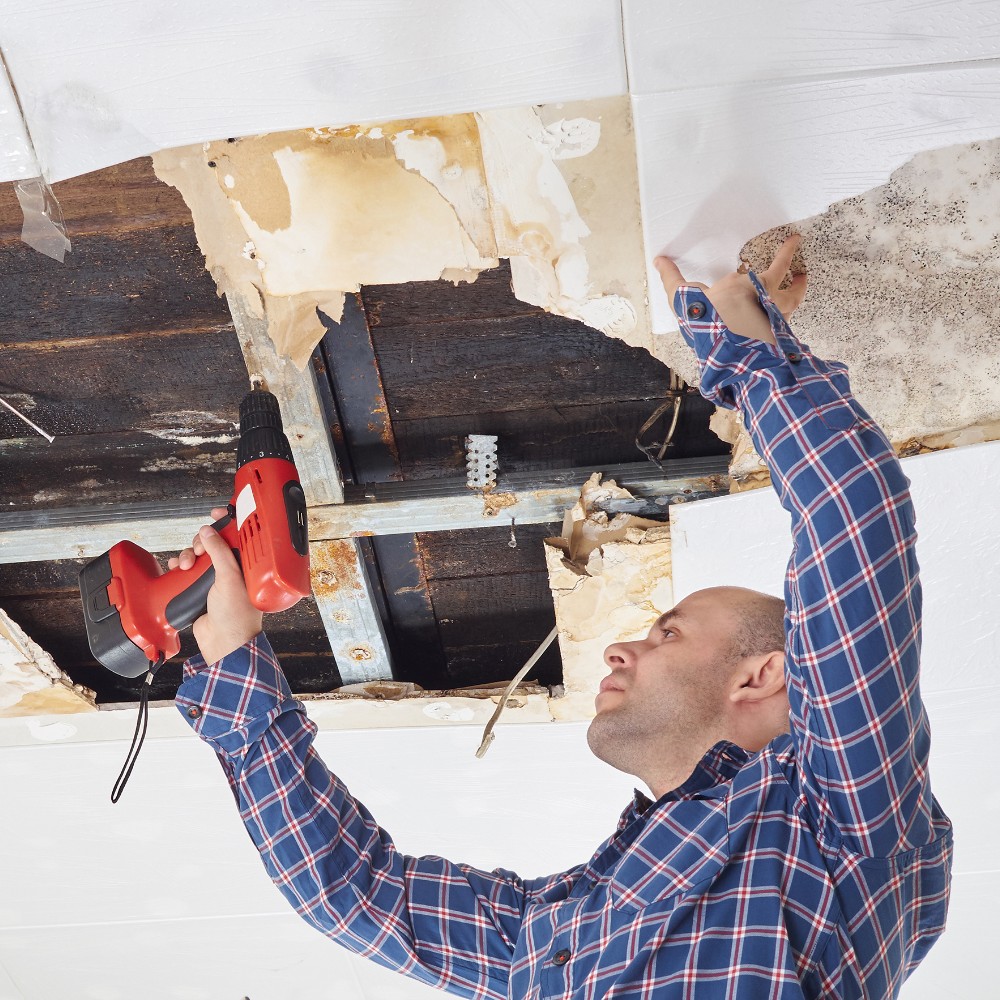All About Water Damage Remediation: Trick Truths and Advantages You Should Know
Water damage reconstruction is a crucial process that every house owner should recognize. It involves assessing the type of damage, whether tidy, gray, or black water, and carrying out an organized reconstruction method. Identifying the signs of water damages early can greatly influence the performance of the repair. Recognizing the steps entailed and the value of timely activity can avoid additional difficulties. What variables should homeowners consider when making a decision between professional solutions and do it yourself techniques?
Comprehending Water Damage: Types and Causes
What aspects contribute to water damage, and exactly how can they be classified? Water damage can be identified right into 3 main classifications: tidy water, gray water, and black water. Tidy water originates from sources like broken pipes or rainwater, posturing minimal health and wellness risks. Gray water, which may come from home appliances like dishwashing machines or cleaning equipments, has contaminants that call for mindful handling. Black water, stemming from sewer or flooding, postures severe health dangers and demands immediate focus.
The reasons for water damage vary. Usual elements include plumbing failures, roofing leakages, natural calamities, and bad water drainage systems. Furthermore, human mistakes, such as leaving taps falling short or running to preserve devices, can worsen the issue. Understanding these types and causes is necessary for reliable avoidance and removal methods, making sure that building proprietors can take proactive procedures to secure their homes versus the damaging effects of water damage.
Indicators of Water Damage: How to Recognize Concerns Early
How can one discover the very early indicators of water damages prior to it rises into a more severe issue? Identifying these concerns promptly can save property owners from extensive repair work. Common indications consist of noticeable water stains on ceilings or walls, which typically look like yellowish or brownish spots. Another indication is bubbling or peeling paint and wallpaper, recommending dampness beneath the surface area. Stuffy odors can also indicate surprise mold growth, a straight outcome of prolonged moisture. In addition, warping or buckling of floors might show excess moisture in the underlying frameworks. Homeowners must regularly examine locations prone to water exposure, such as basements, kitchen areas, and washrooms, for any indications of leak or wetness. Ultimately, a sudden boost in utility costs might mean unnoticed leaks. By acknowledging these very early signs, individuals can take positive actions to attend to water damage prior to it aggravates.
The Water Damages Remediation Process: Step-by-Step

Next, the drying out procedure starts, utilizing air moving companies and dehumidifiers to get rid of wetness from wall surfaces, floorings, and individual possessions. After the area is extensively dried, cleaning and sanitization occur to get rid of impurities and odors.
Ultimately, repair work and remediation work is conducted, which may consist of changing broken materials, repainting, or refinishing surface areas. water damage restoration. Throughout the process, paperwork is preserved for insurance purposes, ensuring that all activities taken are recorded. Each step is vital to bring back the home and assure a risk-free living setting for owners
Relevance of Timely Repair: Why Performing Rapid Issues
Timely reconstruction complying with water damage is essential, as hold-ups can cause rising issues such as mold and mildew growth and architectural deterioration. Water can rapidly permeate into porous materials, developing an ideal environment for mold spores to flourish. Within 24-48 hours, mold and mildew can start to establish, posturing wellness dangers and more complicating repair initiatives.

In addition, extended exposure to moisture can compromise the structural stability of buildings, bring about pricey repair services and possible safety threats. Acting fast not only decreases damages however additionally reduces the overall cost of reconstruction. Insurance coverage business often favor prompt activity, which can facilitate smoother insurance claims processes and quicker economic recovery for homeowner.
Inevitably, prioritizing prompt remediation protects property worth, boosts safety, and promotes a healthier living environment. For these factors, speedy action is important in the after-effects of water damage, emphasizing advice the significance of dealing with problems as quickly as they arise.
Expert vs. do it yourself Remediation: Cons and pros
When thinking about water damages reconstruction, property owners often evaluate the choices of expert services against do it yourself techniques. Expense considerations play a substantial role, as specialist restoration can be more expensive yet may provide exceptional experience and specific equipment. Each choice has its cons and pros, influencing both the performance and performance of the restoration process.
Cost Factors to consider
While property owners may consider both professional solutions and do it yourself methods for water damages repair, each alternative presents distinctive financial ramifications and advantages. Specialist repair services frequently feature greater in advance costs because of devices, expertise, and labor. Nonetheless, they can quicken the restoration process, potentially decreasing further damages and connected prices. On the other hand, DIY repair may show up extra affordable originally, as it typically includes lower direct expenses. Homeowners must factor in the potential for blunders, which might lead to extra considerable damage and greater long-term prices. Ultimately, the selection in between professional and do it yourself restoration depends upon the homeowner's spending plan, the severity of the damages, and their willingness to invest effort and time right into the reconstruction procedure.
Experience and Equipment
A remarkable distinction in between expert and do it yourself water damage restoration exists in the experience and tools offered for every approach. Specialists possess specialized training and experience, allowing them to assess damage precisely and implement effective reconstruction methods. They use advanced equipment, such as industrial-grade dehumidifiers and moisture detection tools, which can greatly accelerate the drying out process and stop more problems like mold and mildew development. On the other hand, DIY reconstruction often counts on fundamental family tools and methods, which may be less reliable and can lead to insufficient repair services. While DIY can save money, it also lugs risks, including potential carcinogen and considerable damage otherwise performed appropriately. Eventually, picking in between professional solutions and DIY methods depends upon the severity of the property owner and the damage's capacities.
Advanced Techniques in Water Damage Restoration
Water damage reconstruction has actually commonly depended on conventional methods, advanced methods are now Learn More changing the sector. Developments such as thermal imaging technology enable restoration professionals to identify surprise dampness behind wall surfaces and navigate to this website under floorings, ensuring comprehensive drying processes. Additionally, making use of high-capacity dehumidifiers accelerates wetness removal, considerably decreasing the threat of mold development.
One more innovation is the implementation of antimicrobial therapies, which inhibit mold and bacteria growth, securing the wellness of passengers. Moreover, advanced drying equipment, including air movers and specialized drying out floor coverings, boosts air circulation and facilitates quicker evaporation of dampness.
Furthermore, real-time surveillance systems now offer continual analyses of moisture levels, enhancing and making it possible for timely treatments restoration efforts. These developments not just boost the effectiveness of water damage repair yet additionally contribute to better results for residential properties, decreasing lasting damage and costs connected with water-related events.
Stopping Future Water Damage: Tips for Homeowners
To avoid future water damage, home owners need to adopt aggressive measures that address potential susceptabilities in their buildings. Regular upkeep of seamless gutters, downspouts, and roofs is crucial; ensuring these are free from particles can stop water accumulation. Property owners ought to likewise examine pipes systems for leakages and change damaged pipelines promptly. Installing sump pumps in basements can fend off flooding during heavy rains, while utilizing water alarms can give very early detection of leaks.
In addition, sealing doors and windows helps protect against rainfall breach. Landscape design needs to direct water away from the structure, employing correct grading and water drainage options. House owners could additionally take into consideration waterproofing cellars and creep rooms to more minimize risks. Inevitably, keeping an upgraded stock of home items can aid in insurance policy claims should harm take place. By carrying out these techniques, property owners can meaningfully reduce the possibility of water damage and safeguard their financial investments.
Often Asked Inquiries
Just How Much Does Water Damage Reconstruction Generally Price?
Water damages repair normally sets you back in between $1,000 and $5,000, relying on the degree of the damages, the kind of materials impacted, and the location. Complex cases might surpass this variety noticeably, needing professional assessment.
Will My Insurance Policy Cover Water Damages Remediation Expenses?
Insurance insurance coverage for water damages restoration varies by plan and scenarios. Usually, house owners' insurance coverage might cover damages from sudden incidents, but exemptions might use. It is advisable to review the plan information or talk to an insurance representative.
The length of time Does the Restoration Refine Generally Take?

What Should I Do Promptly After Finding Water Damages?
Upon finding water damages, one need to immediately shut off the water resource, eliminate valuable items from the afflicted location, and guarantee correct air flow. Looking for professional aid is essential for reliable damage assessment and restoration.
Are There Particular Materials That Are Immune to Water Damages?
Specific products, such as cured timber, concrete, and fiberglass, display higher resistance to water damages. Furthermore, synthetic fabrics and water resistant finishes boost longevity, providing reliable protection against wetness and possible degeneration in time.
Water damages can be categorized right into three main classifications: clean water, grey water, and black water. When taking into consideration water damage repair, house owners often weigh the alternatives of specialist services versus Do it yourself methods. While homeowners might think about both specialist solutions and DIY approaches for water damage restoration, each alternative presents distinctive monetary ramifications and benefits. Water damage restoration commonly sets you back between $1,000 and $5,000, depending on the degree of the damages, the type of materials influenced, and the place. Upon finding water damage, one ought to right away transform off the water resource, remove useful products from the damaged area, and warranty appropriate air flow.